In ideal conditions, you can get as many as 10 potatoes per plant. Conditions are not always ideal though, so let’s look at how we can best encourage our plants to produce as many potatoes as they can.
A healthy potato plant can produce between 5 – 10 potatoes. A rough gauge of potato plant yield is generally 10 pounds of potatoes harvested per 1 – 2 pounds of seed potatoes planted. However, per-plant yield will depend on the variety and growing conditions.
The variety of potatoes, the environment, and the care you give them all contribute to how many potatoes you get from your plants. Sometimes it is hard to tell how your potatoes are doing since they are underground.
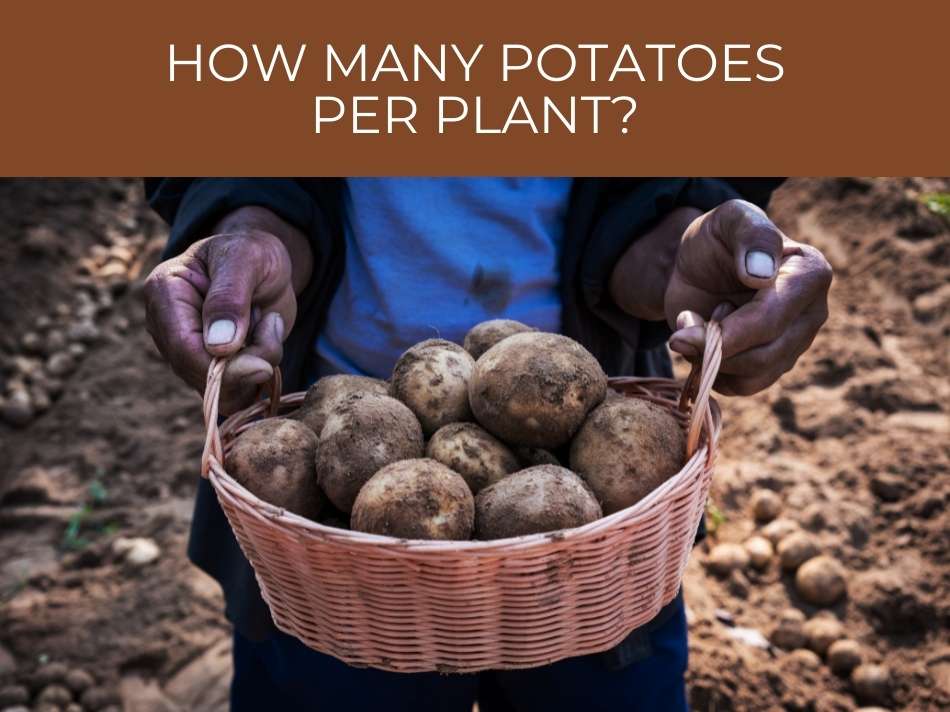
How many potatoes per plant?
Getting 10 potatoes from a plant is ideal, but it may not be reasonable to expect every plant to produce that many.
You don’t hit every shot you take in sports, and every plant is not going to do its best, no matter how well you take care of them.
Most varieties of plants will produce at least 5 potatoes, though that’s on the lower end of the average range. If you have optimal growing conditions, 7 – 10 potatoes per plant can be expected.
For many growers, it‘s reasonable to expect an average of seven potatoes per plant.
If you get closer to 10, that’s a bonus.
Potatoes are sensitive to frost and cold spells, so you have to be careful to plant them at the right time to get the best results.
They can be damaged by heat, dryness, and sunlight as well.
Find out the ideal time to harvest potatoes.
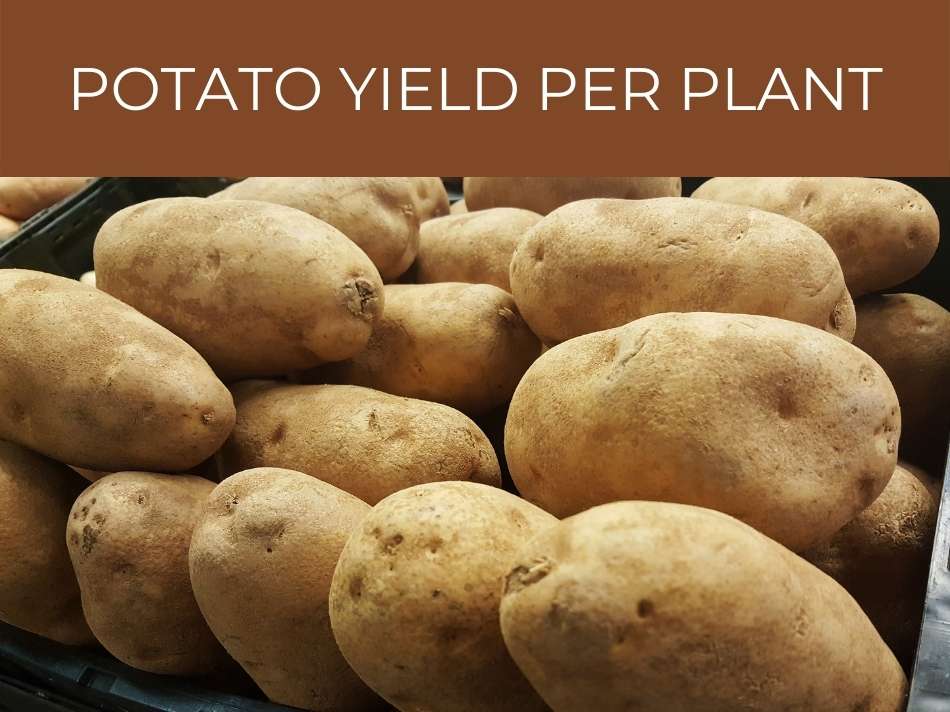
Potato yield per plant
When it comes to harvesting your potatoes, there is more to consider than just the number of potatoes.
There are a lot of factors.
The pounds of potatoes you get from your garden are the true measure of your results.
On average, each potato plant can be expected to produce 5-10 potatoes when harvested at the end of the season. Another way of estimating potato yield is: roughly 10 pounds of potatoes for every pound of seed potatoes planted.
If you want a lot of new potatoes, you will not get as much yield, but you may decide it’s worth it to have those new potatoes.
If you care for your plants well and wait until the plants above the ground have died out, you will then get the greatest yield from each plant.
See the full guide on growing baby potatoes.
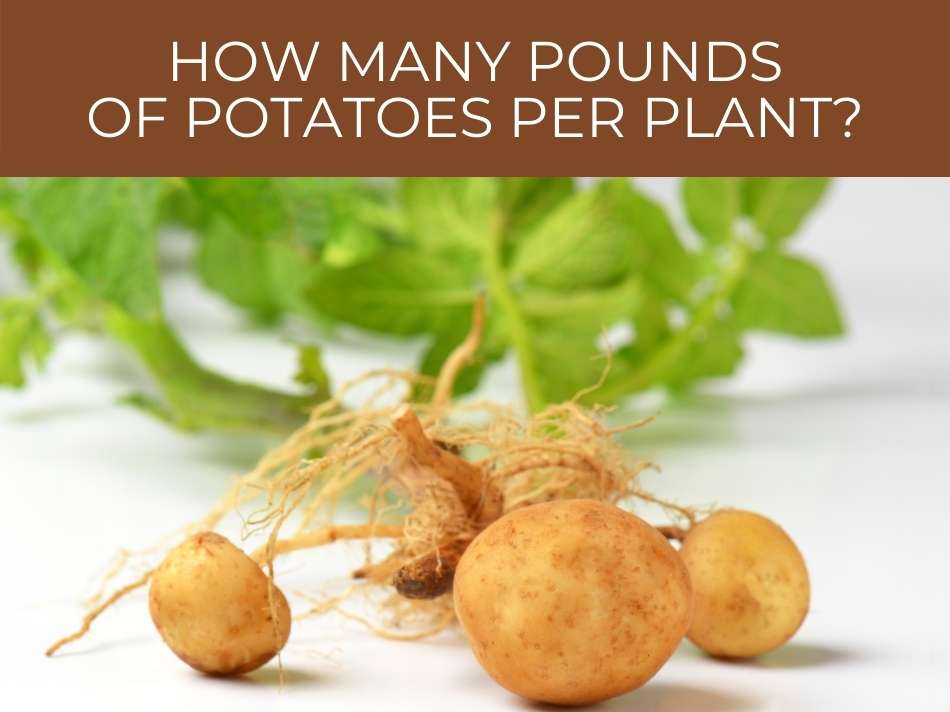
How many pounds of potatoes per plant?
There are a lot of factors that determine how many pounds of potatoes you will get per plant.
It may be best to think of it as an average, instead of a number.
The environment, including the soil and weather, have a lot to do with it.
Depending on the variety, you should expect to average between 2 – 5 pounds of potatoes per plant in your garden. However, if harvesting new potatoes (roughly 2-3 weeks after the plant flowers), the yield will be lower than late-season potatoes.
Potatoes are not high maintenance, but they do need plenty of sunshine, water, and drainage.
When the flowers start blooming on the plants, there are very likely some new potatoes forming under the ground.
When the plants above the ground die out, potatoes are as big as they are going to get.
See how some fertilizers can increase potato yields.
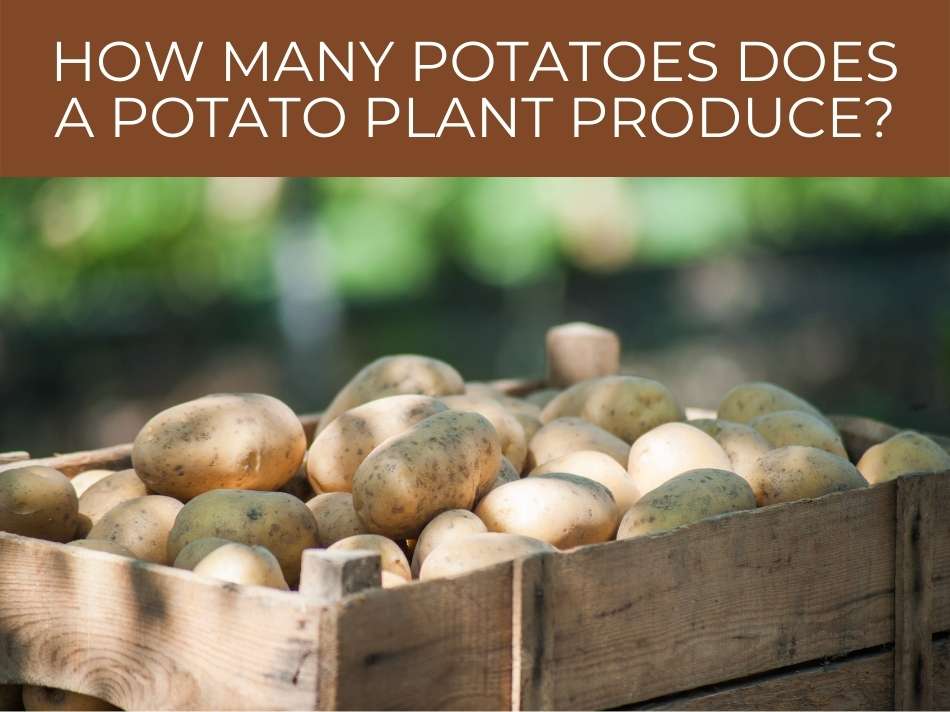
How many potatoes does a potato plant produce?
Potatoes are a cool weather plant but can do alright in places like Florida if they are taken care of.
They are low maintenance for the most part, but there are things that can hurt your potatoes.
Potato plants produce between 5 – 10 potatoes per plant. How you plant them also affects the yield. They should be planted 3 -4 inches deep and about 8 inches apart. Rows should be roughly 36 inches apart.
A 100-foot row should produce between 150 and 300 pounds of potatoes.
To get the most out of your potatoes, follow the planting directions.
Place them in soil that drains well, and keep them watered.
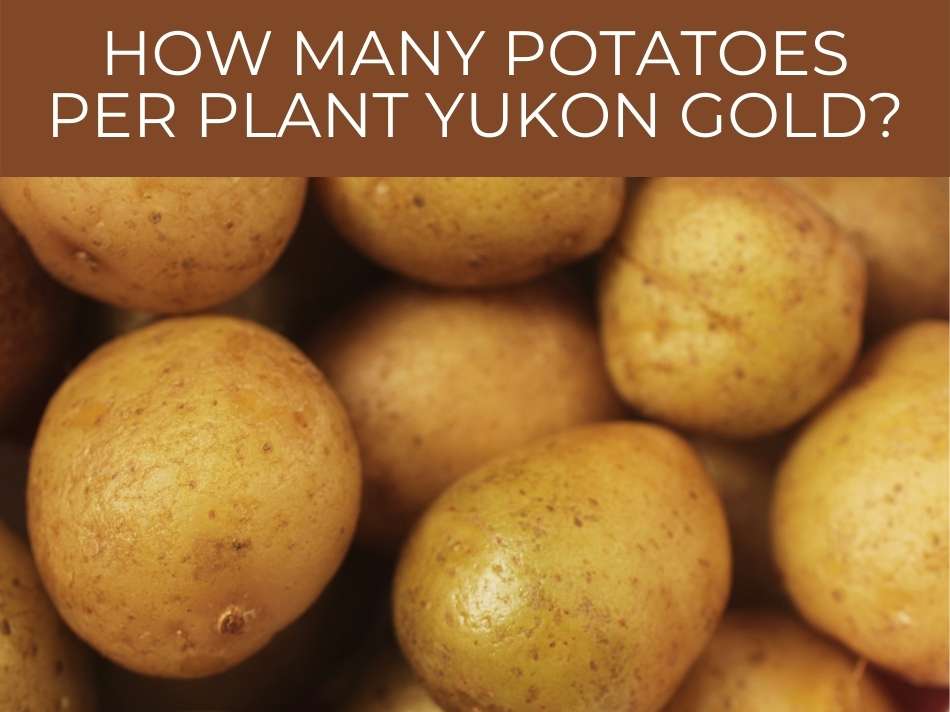
How many potatoes per plant Yukon gold?
Yukon potatoes are distinguished by their smooth waxy skin and yellowish meat and they are one of the most popular varieties.
They have a lot of vitamins, potassium, and fiber, so they are a good part of any diet.
Yukon potatoes are ready between 80 and 95 days after planting and you can expect a pound or so of potatoes for each plant. A row of 100 feet should produce 100 – 300 pounds of potatoes. Yukon gold plants produce an average of 5 – 10 potatoes per plant.
Yukon gold potatoes are popular because they go well with a lot of recipes, and they will last at least six months when stored properly.
They taste good and have a lot of positive nutrients as well.
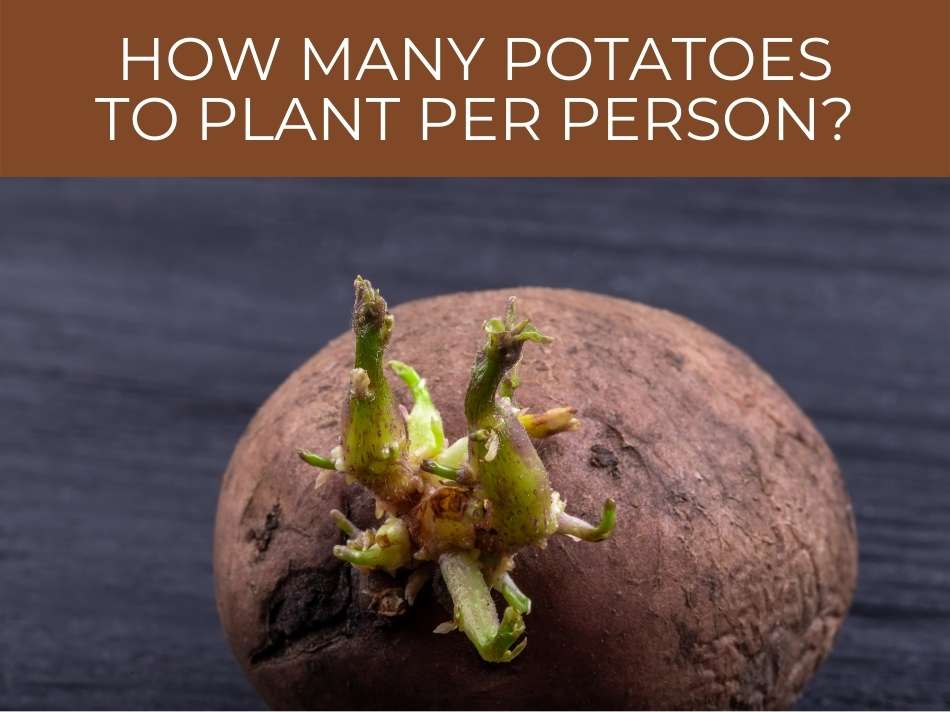
How many potatoes to plant per person?
Americans average eating 120 pounds of potatoes each year, and that is more than any other vegetable.
You will no doubt eat potatoes that you did not grow, so you will not need to harvest that many per person, but it may give you an idea.
Farming experts say 40 plants will provide 3 – 4 potato-based meals per week for a family of 4 people. So, that means a garden or farm will require 10 plants per person to yield enough potatoes harvested to last a year.
Farming experts say a garden with 40 plants will provide six-months worth of potatoes if you eat the average amount.
That does not count the potatoes you eat in other places.
See our full guide on how to grow potatoes.
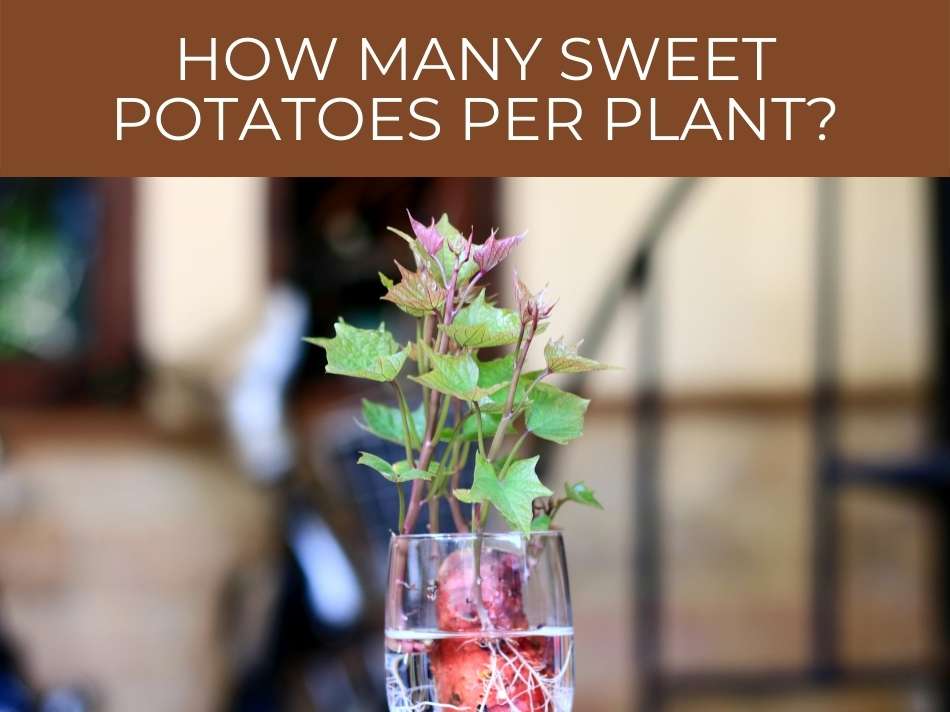
How many sweet potatoes per plant?
Potatoes are sensitive to external conditions, and sweet potatoes are even more so.
They can be damaged more easily than regular potatoes even though they feel more sturdy.
In cooler climates (USDA zones 1 – 5), you can expect 3 – 5 sweet potatoes per plant. However, in warmer climates (USDA zones 6 – 10) where the growing season is longer, you can expect 6 – 10 sweet potatoes per plant.
Sweet potatoes take between 90 and 170 days to grow to maturity.
When the leaves on the plant start to turn yellow, you can start digging up sweet potatoes.

How many potatoes does one plant produce?
A lot depends on the variety of plants you choose, as well as the environment.
Conditions are not always ideal, but potatoes are fairly easy to grow, so if you take care you should get a good yield.
You can expect between 5 – 10 potatoes per plant. This applies to new potatoes as well as late-season, fully grown potatoes. However, the size of new potatoes is generally 1 – 3 inches, while late-season potatoes can be 3 – 6 inches. Some red potato varieties can produce more potatoes than other varieties.
Weather and soil conditions will have an effect on how many potatoes you get per plant, and on their weight.
If you do the best you can at things you can control, you will get a good crop.
See whether a potato is a vegetable or fruit.
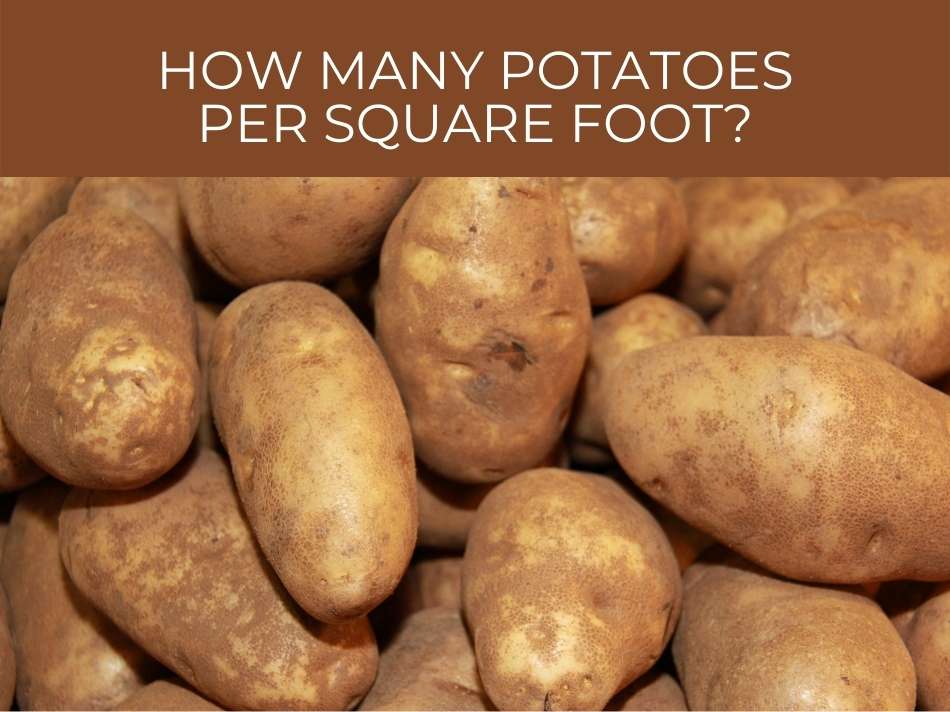
How many potatoes per square foot?
How close your plants are together will have an impact on the yield, both in the number of potatoes and in their weight.
Potatoes are extensions of roots, and they need room to grow underground as well as above ground.
Potatoes can be planted in densities with 1 – 4 plants per square foot, with optimal growing conditions. However, most growers find that 1 – 2 plants per square foot allows better air circulation and better per-plant growth. More plants per square foot generally lowers the per-plant yield.
If you want a lot of new potatoes, plant four plants per square foot.
If you want the biggest potatoes, plant one per square foot.
The size of the potato will be affected more than the number of potatoes.
See our recommendation for how deep to plant potatoes.
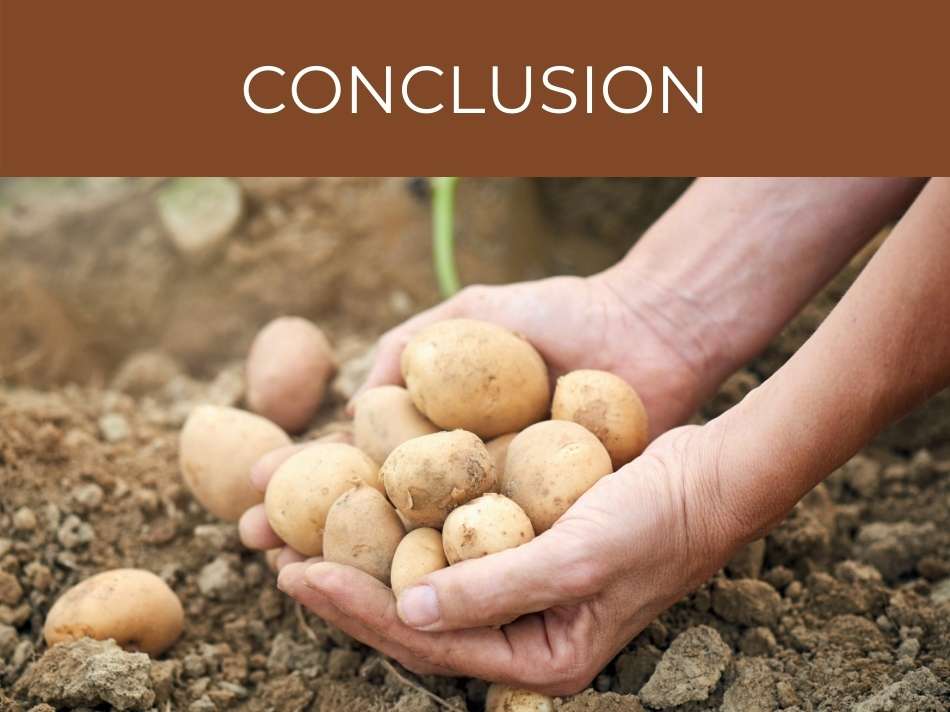
Conclusion
For most varieties of potato, five to 10 per plant is the average.
Keeping them healthy, and planting far enough apart will give you the most potatoes from your crop.
Keeping them watered in soil that drains well is the key to a bountiful crop.

